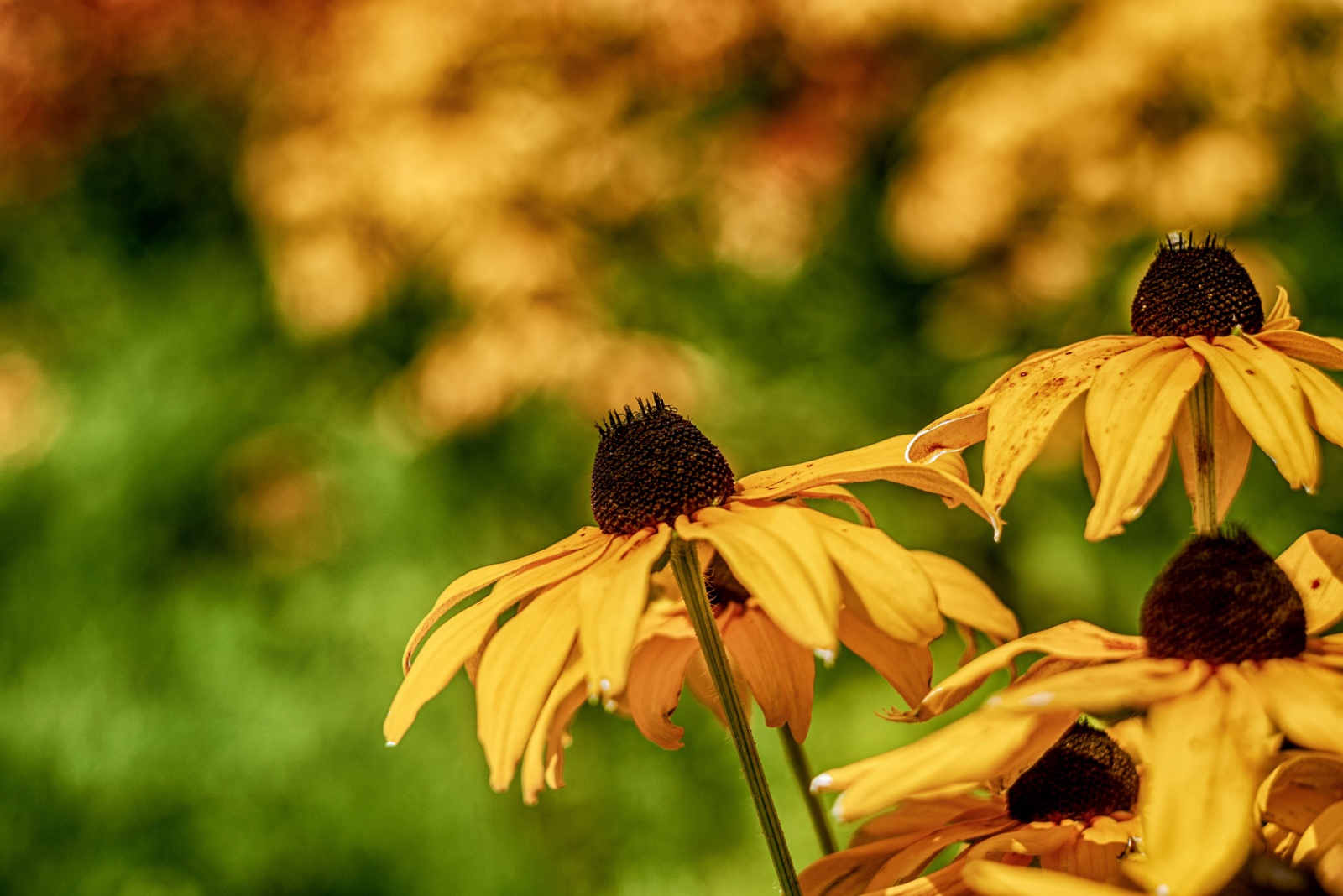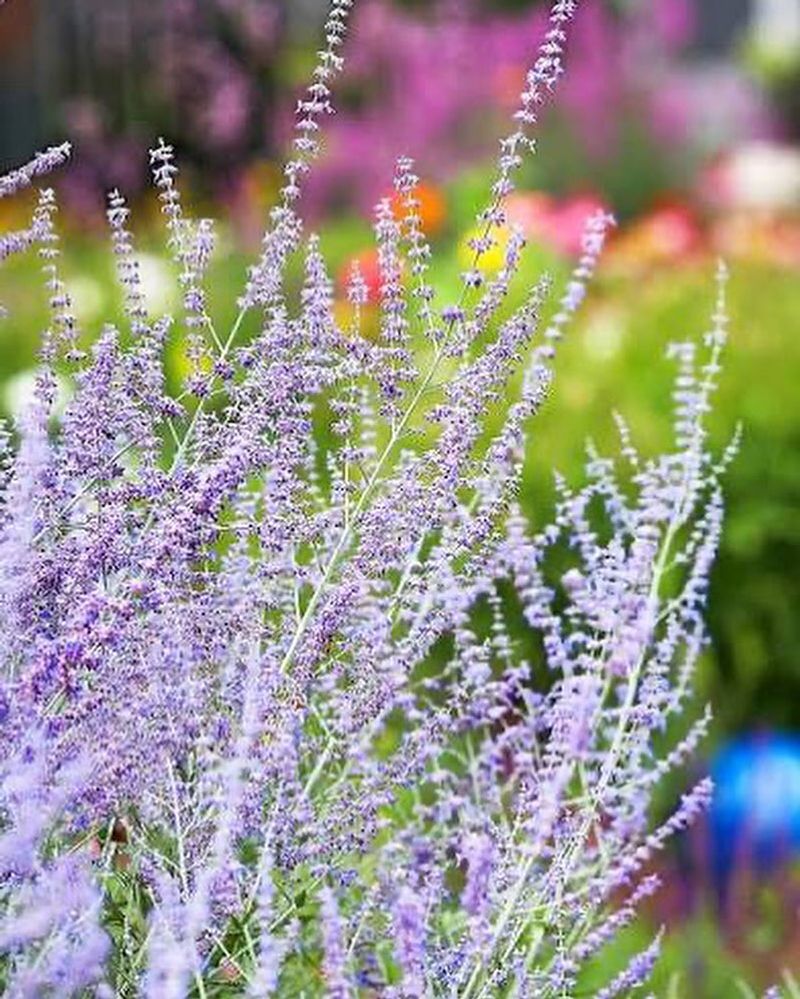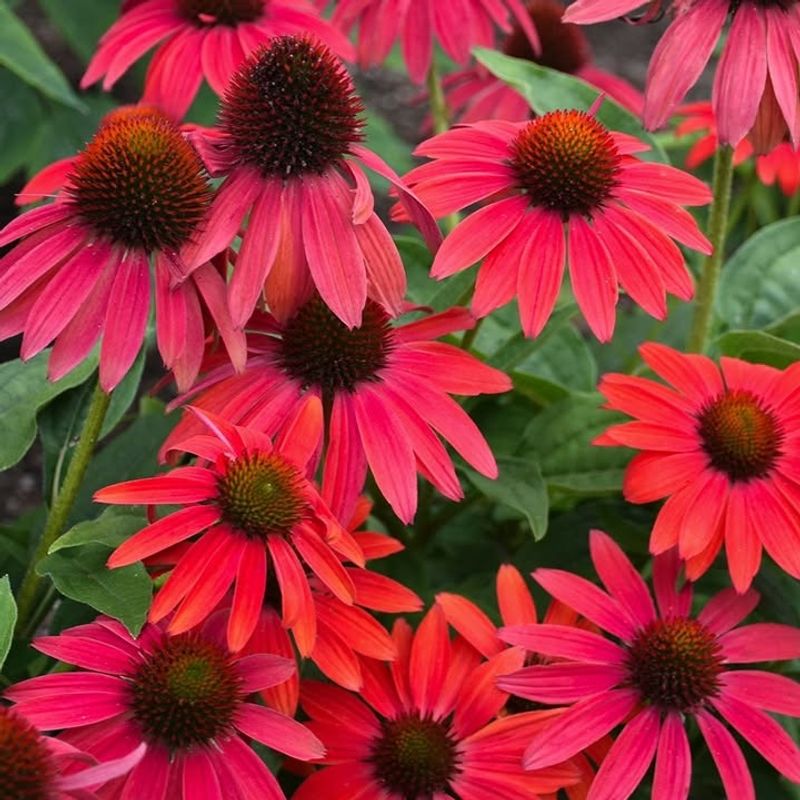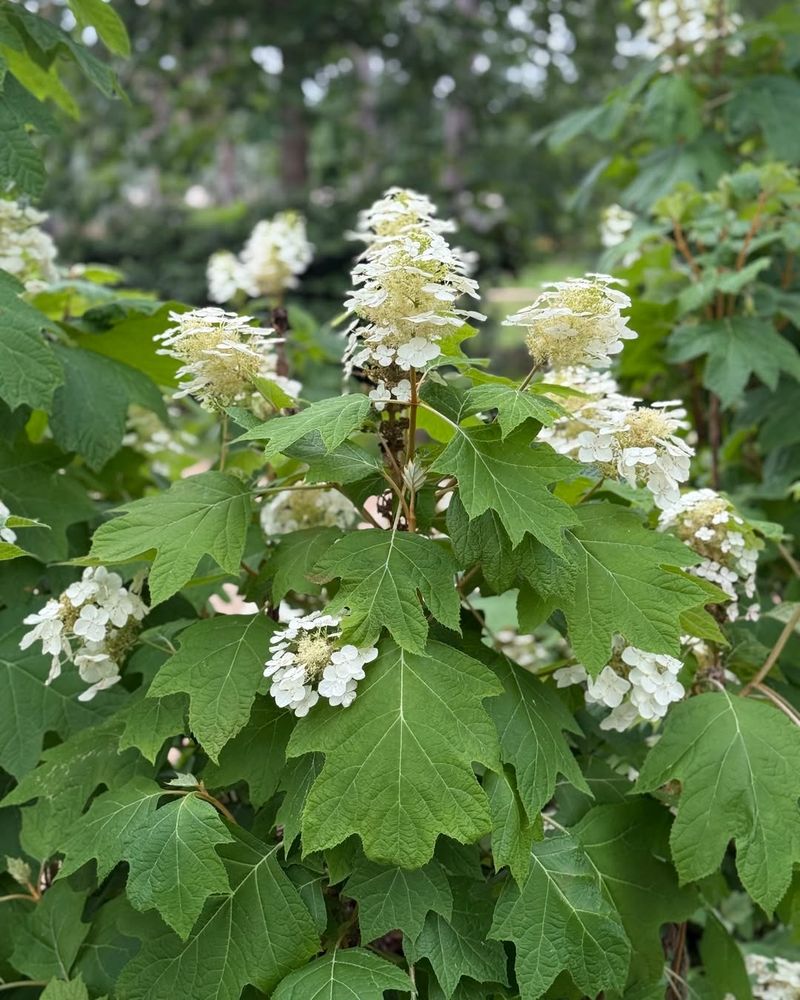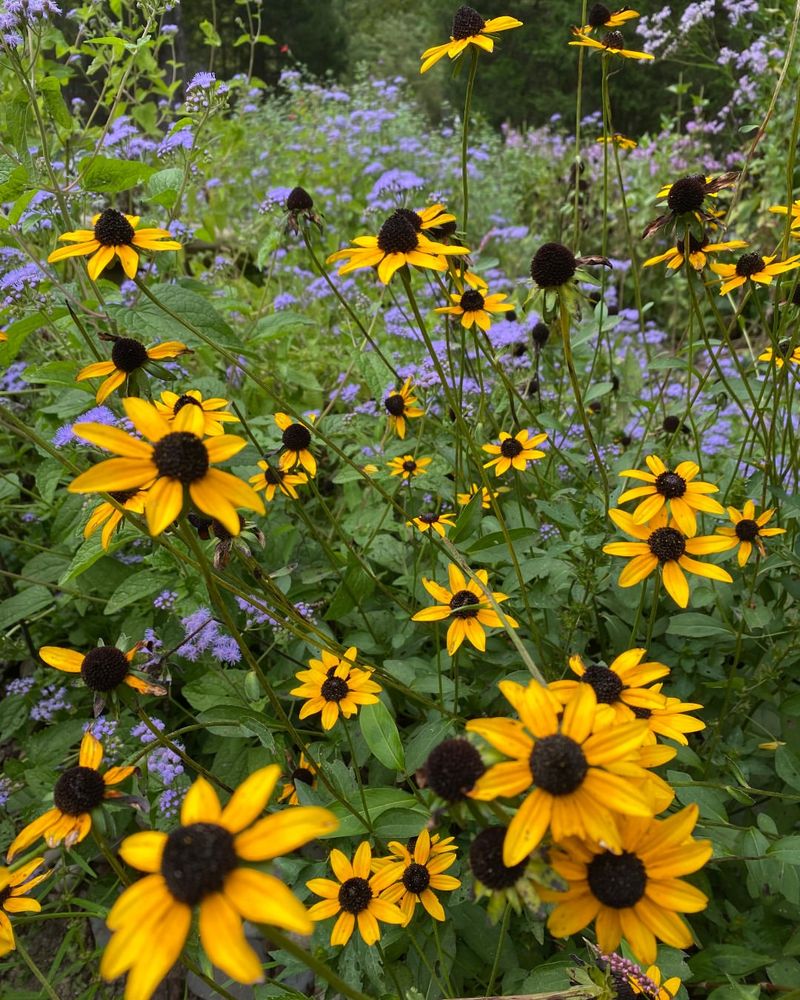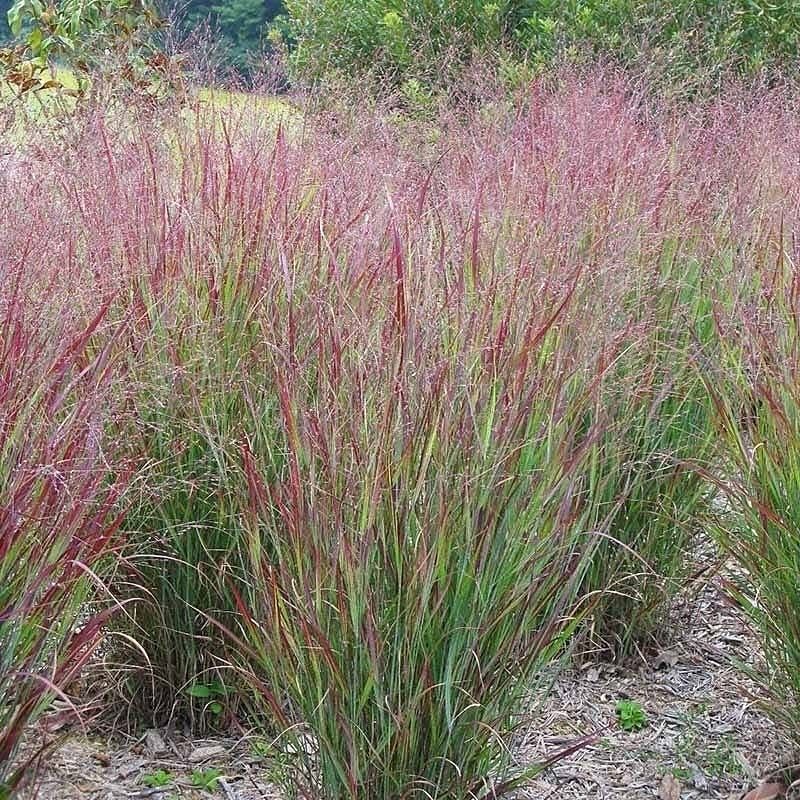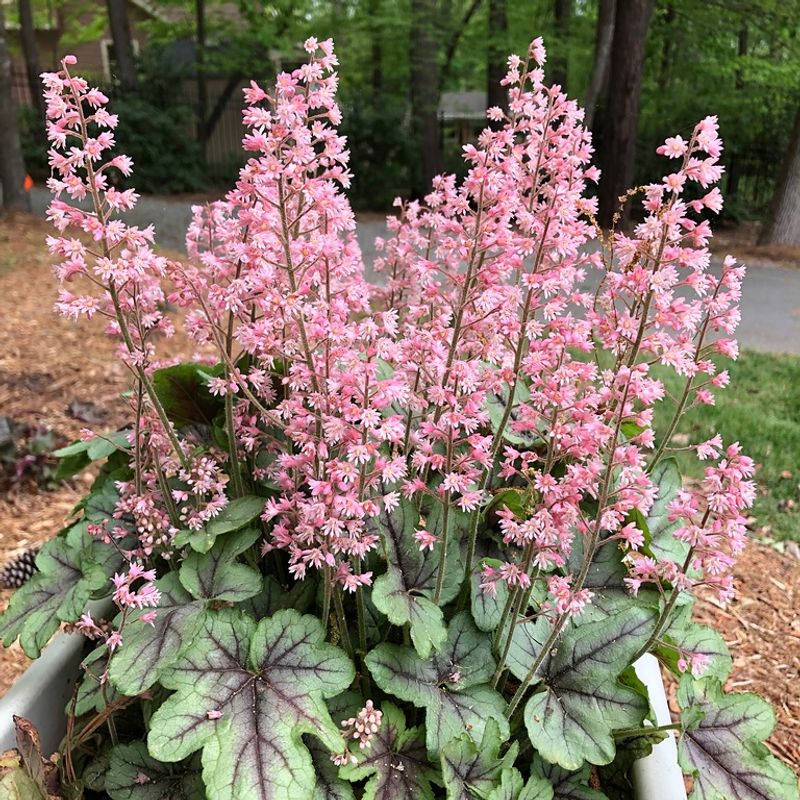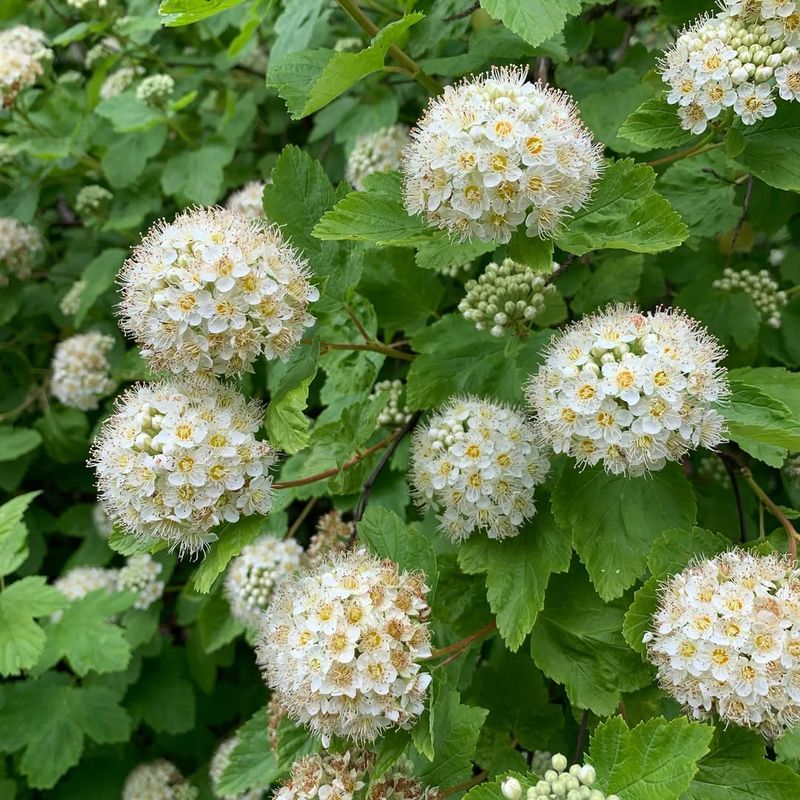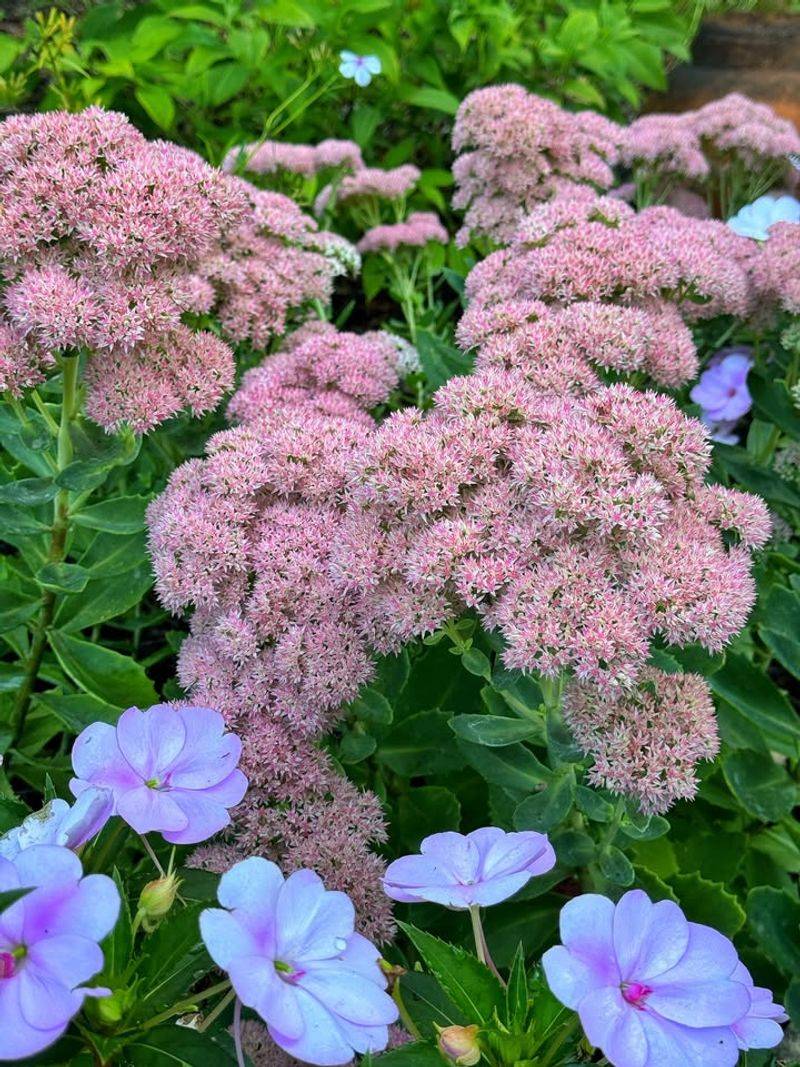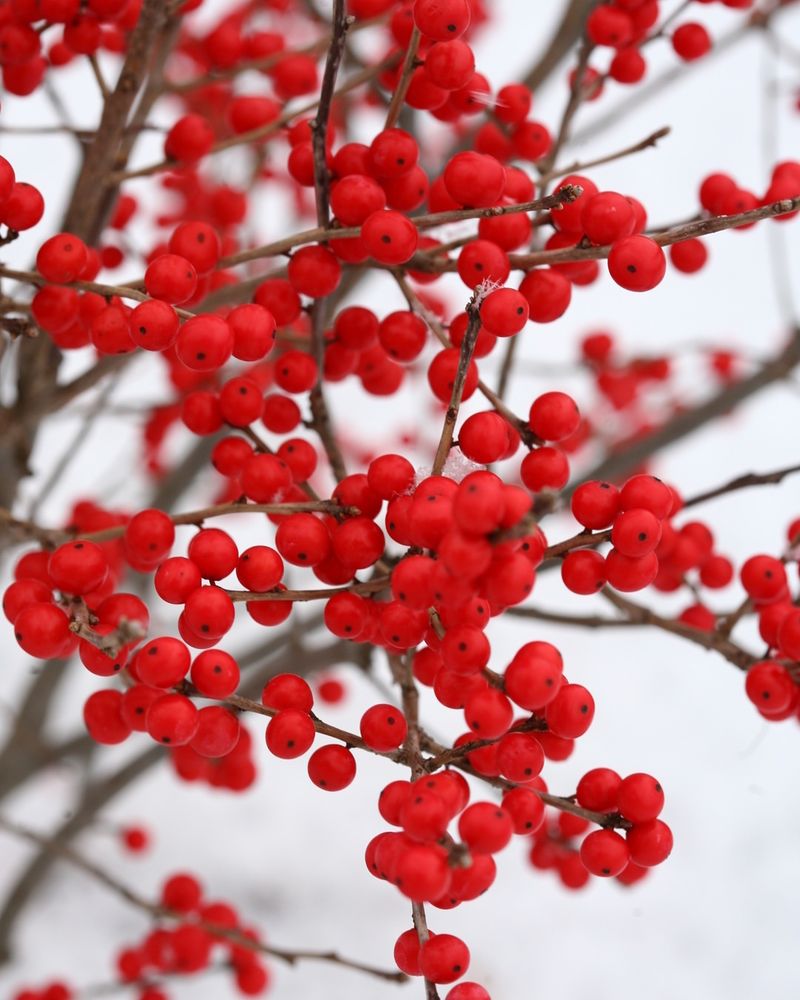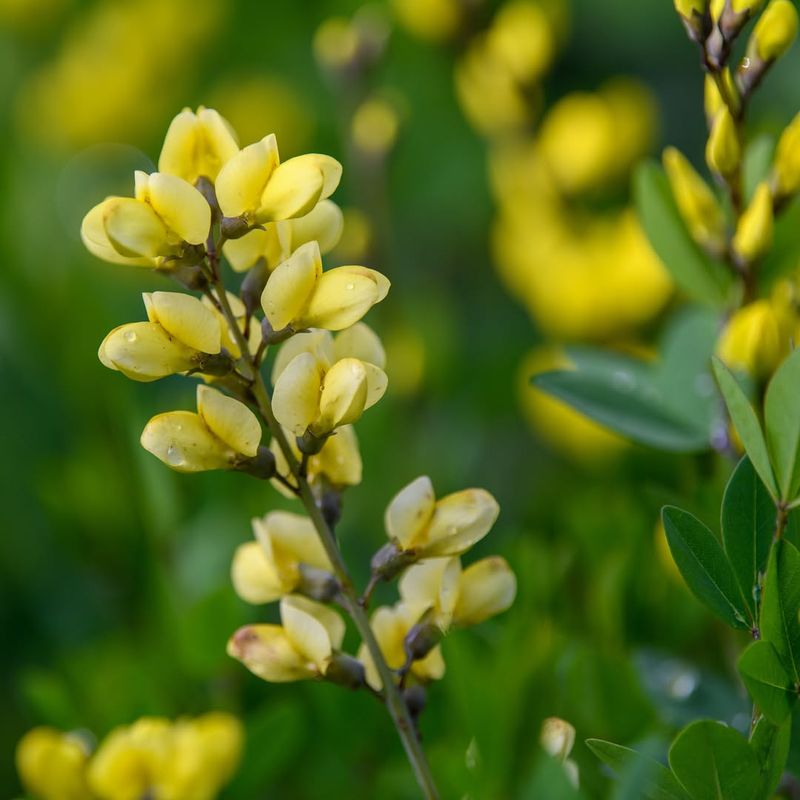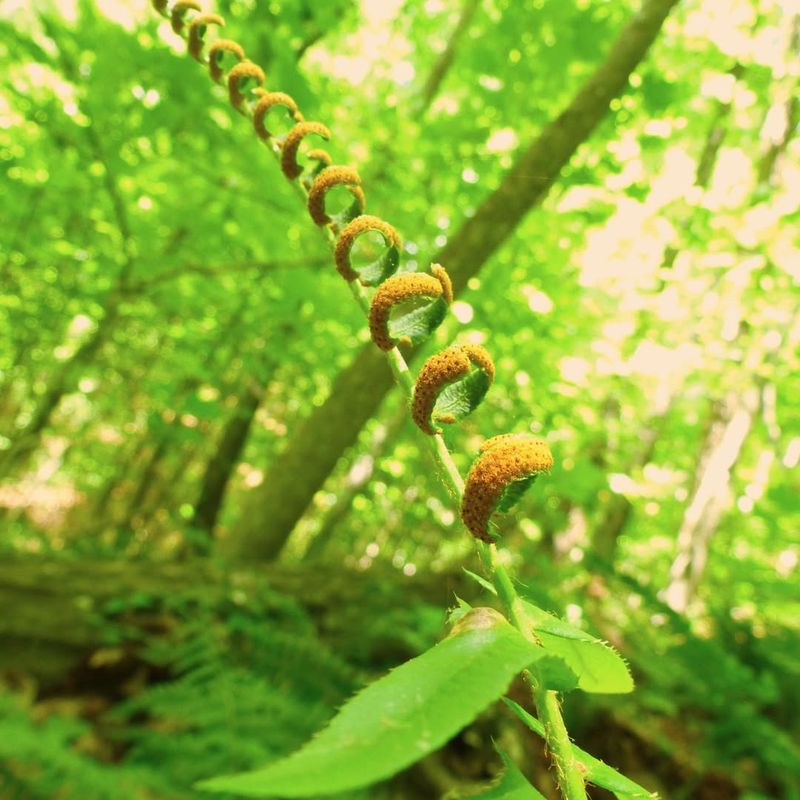Creating a beautiful Ohio garden isn’t just about spring flowers – it’s about choosing plants that provide interest throughout the changing seasons. Our state’s climate offers unique challenges and opportunities for gardeners looking to maintain color and texture year-round.
With the right plant selections, your garden can showcase stunning visual appeal from early spring through the first winter frost.
1. Ornamental Grasses
Swaying gracefully in Ohio’s summer breeze, ornamental grasses add movement and sound to any garden space. Their feathery plumes catch morning light in ways that transform ordinary landscapes into magical retreats.
My Miscanthus ‘Morning Light’ stands tall through winter, providing structure when other plants have faded. The dried stalks collect frost and snow, creating natural sculptures in the colder months.
Plant these sturdy performers in well-drained soil where they’ll receive at least six hours of sun daily. Most varieties require minimal care beyond an annual cutting back in late winter.
2. Russian Sage
Clouds of lavender-blue flowers hover above silver-gray foliage from mid-summer through fall in my front border. Russian sage stands up to Ohio’s summer heat and humidity without missing a beat.
Last August, when neighboring plants wilted during a dry spell, this tough perennial continued performing beautifully. Its aromatic foliage deters deer and rabbits, making it practical for rural gardens.
Give this Mediterranean native full sun and well-drained soil. Once established, it rarely needs watering, even during our occasional summer droughts.
3. Coneflowers
Summer after summer, my purple coneflowers return with their cheerful daisy-like blooms that goldfinches can’t resist. Native to the Midwest, these hardy perennials feel right at home in Ohio’s clay soils.
Beyond their months-long flowering period, coneflowers offer winter interest when their distinctive seed heads stand above the snow. I’ve watched chickadees and finches visit these natural bird feeders throughout January.
Consider planting newer varieties like ‘PowWow Wild Berry’ for more intense color that doesn’t fade as quickly as the species.
4. Oakleaf Hydrangea
Four seasons of interest make oakleaf hydrangea a standout performer in my partly shaded backyard. Spring brings fresh green foliage with distinctive oak-shaped leaves unlike any other shrub.
Cone-shaped white flower clusters appear in early summer, gradually changing to pink, then russet as months pass. I’ve noticed they hold their dried flowers well into winter, creating natural dried arrangements.
Fall transforms the leaves into brilliant burgundy and purple, while winter reveals exfoliating cinnamon-colored bark. Plant where you can appreciate this year-round show from a window or patio.
5. Black-Eyed Susan
Golden daisies with chocolate centers blanket my sunny border from July through September. Few plants match black-eyed Susans for sheer flower power during Ohio’s hottest months.
After a particularly wet June last year, these native wildflowers still performed flawlessly while more delicate plants succumbed to fungal issues. Their drought tolerance makes them equally valuable during dry spells.
Try the variety ‘Goldsturm’ for a more compact habit that doesn’t require staking. Deadheading extends bloom time, but leaving some seed heads provides winter food for birds.
6. Switchgrass
Feathery seed heads catch morning dew like strings of diamonds in my native garden border. Switchgrass has become my favorite vertical accent plant, providing height and movement through every season.
The cultivar ‘Northwind’ stands poker-straight even after heavy snow, unlike some grasses that flop. Its blue-green summer foliage shifts to golden yellow in fall, then fades to a soft tan that persists through winter.
Being native to Ohio prairies makes this grass perfectly adapted to our climate extremes. Plant in groups of three or five for maximum visual impact.
7. Coral Bells
Evergreen rosettes of colorful foliage brighten my garden’s shady corners year-round. Modern coral bells varieties offer leaves in purple, caramel, silver, and nearly every color imaginable.
During a January thaw last year, I noticed how beautifully the burgundy leaves of ‘Palace Purple’ contrasted with melting snow. Their delicate spring flower spikes attract hummingbirds but remain secondary to the spectacular foliage.
Plant these woodland natives in humus-rich soil where they’ll receive morning sun but afternoon shade. They perform beautifully in containers too.
8. Ninebark
Burgundy foliage creates drama in my garden borders from spring through fall. Ninebark shrubs have transformed from native understory plants to garden superstars thanks to new cultivars with colorful leaves.
White flower clusters in late spring attract beneficial insects to my garden. After flowering, interesting seed heads develop, followed by exfoliating bark that reveals itself when winter arrives.
My ‘Diabolo’ ninebark survived last year’s polar vortex without a hint of damage. This tough Ohio native tolerates both wet springs and summer drought once established.
9. Autumn Joy Sedum
Succulent blue-green foliage emerges early in spring, creating months of textural interest before flowers even appear. By August, broccoli-like flower buds form, gradually opening into broad pink flower heads that butterflies adore.
Flower color deepens to russet by October, then maintains its form through winter. Snow collects on the dried flower heads, creating natural ice sculptures outside my kitchen window.
Growing Autumn Joy in my clay soil has been effortless. These drought-tolerant plants actually perform better with minimal watering, making them perfect for busy Ohio gardeners.
10. Winterberry Holly
Brilliant red berries light up the winter landscape when most other plants have gone dormant. Unlike traditional hollies, winterberry drops its leaves in fall, creating better contrast for the colorful fruit display.
Birds largely ignore the berries until late winter, ensuring months of visual interest. My plantings near the driveway provide welcome color during Ohio’s gray winter days.
Remember that you’ll need both male and female plants for berry production. One male can pollinate several females, so plan accordingly when designing your garden.
11. Baptisia
False indigo creates a shrub-like presence in my perennial border without the woody structure. Each spring, blue-green foliage emerges early, followed by spikes of violet-blue flowers that resemble lupines.
After flowering, interesting seed pods develop that rattle in autumn breezes. The pods turn charcoal black, creating striking silhouettes against winter snow.
My plants took three years to reach full size but now require zero maintenance. Their deep tap roots make established plants extremely drought tolerant – perfect for Ohio’s unpredictable rainfall patterns.
12. Christmas Fern
Glossy evergreen fronds add year-round structure to my woodland garden edge. Christmas fern remains attractive even after heavy snow, providing welcome green during Ohio’s long winter months.
Unlike many ferns that go dormant, these native woodland plants maintain their good looks through all four seasons. The name comes from their historical use as Christmas decorations when little else remained green.
Growing naturally in Ohio’s forests, they’re perfectly adapted to our climate. Plant them where they’ll receive dappled shade and protection from harsh afternoon sun.

